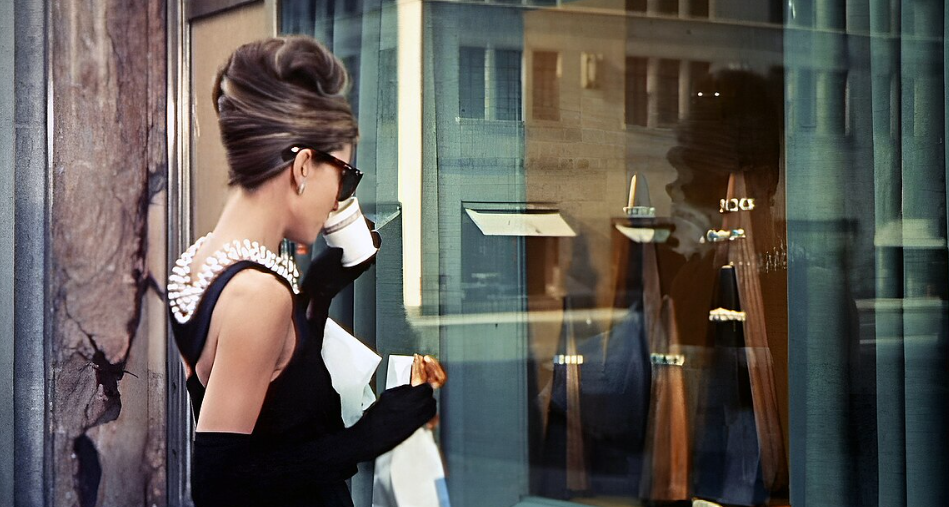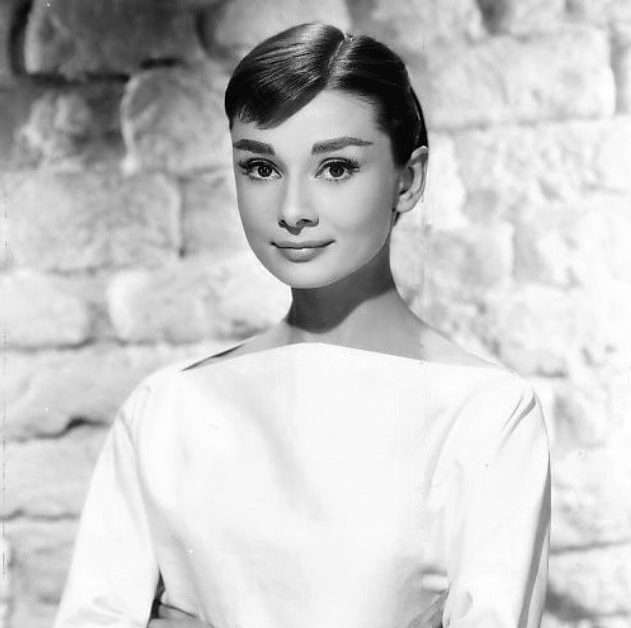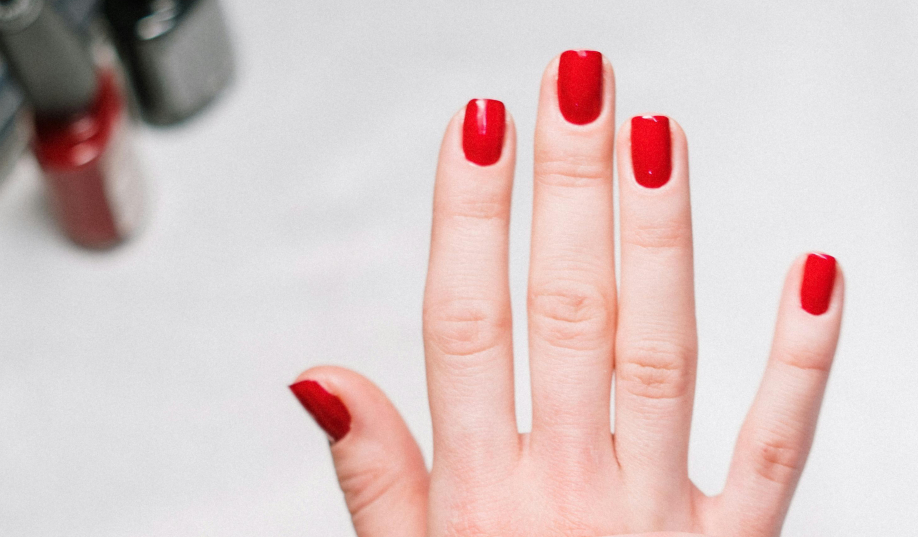How Audrey Hepburn’s Little Black Dress Made History

© Breakfast at Tiffany's / Pramount Pictures
With all of these fashion influencers showcasing their style and outfits online, it is hard to grasp that there was once a time when only specific people were praised for their fashion statements. One of the most renowned fashion icons however is definitely Audrey Hepburn. This household name has made an icon of herself not only through her remarkable acting skills but with her fashion choices as well. She is especially known for her iconic “Audrey Hepburn Little Black Dress”, which is exactly what we are going to dive into together today.
Who Is Audrey Hepburn?
Audrey Hepburn, a multifaceted talent encompassing acting, fashion influence, and philanthropy, was born in Belgium. Her journey through the realms of entertainment and humanitarian work is remarkable. At the age of 22, she graced the Broadway stage with her performance in “Gigi.” Merely two years later, she made a significant impact in the film world by starring alongside Gregory Peck in “Roman Holiday” (1953). However, it was her role as Holly Golightly in “Breakfast at Tiffany’s” in 1961 that redefined fashion standards and solidified her status as a style icon.
What distinguishes Audrey Hepburn is her extraordinary accomplishment of winning prestigious awards across various fields, making her one of the rare talents to achieve an Emmy, Tony, Grammy, and Academy Award. Despite her stellar acting career, as she entered her later years, her focus shifted towards philanthropic endeavors, particularly in advocating for the welfare of children.

Early Career
Hepburn’s early life saw her spending part of her youth in England while attending a boarding school. During the tumultuous years of World War II, she pursued her education at the Arnhem Conservatory in the Netherlands, where she reportedly played a role in aiding the resistance movement by delivering messages, as documented in The New York Times.
Following the war, Hepburn’s passion for dance led her to study ballet, first in Amsterdam and later in London. Her stage debut occurred in 1948 as a chorus girl in the musical “High Button Shoes” in London. Her talent gradually propelled her from minor roles to more prominent ones, including a featured player in “Sauce Piquante” (1950), marking the beginning of her remarkable journey in the world of entertainment.
Audrey Hepburn As “The IT Film Star”
Audrey marked her feature film debut in 1951, albeit in an uncredited role, in “One Wild Oat.” Subsequently, she secured roles in films like “Young Wives’ Tales” (1951) and “The Lavender Hill Mob” (1951), where she shared the screen with the talented Alec Guinness.
However, Hepburn’s trajectory took a significant turn when, at the age of 22, she ventured to New York to star in the Broadway production of “Gigi,” adapted from the book by the French writer Colette. The story, set in Paris around 1900, revolves around the young titular character navigating the complexities of approaching adulthood. Her relatives aim to educate her on the ways of becoming a courtesan, allowing her to enjoy the luxuries of being with a wealthy man without marriage. They endeavor to match her with Gaston, a friend of the family, but the young couple has their plans.
Shortly after the play’s premiere, Hollywood came calling, expressing interest in Hepburn. Just two years later, she made a dazzling impression on the world stage in the film “Roman Holiday” (1953), alongside Gregory Peck. Her portrayal of Princess Ann, a royal who briefly escapes the constraints of her title, captivated both audiences and critics. This exceptional performance earned her the Academy Award for Best Actress.
Breakfast at Tiffany’s
In 1961, Audrey Hepburn took on the role of Holly Golightly, a troubled call girl, in the film adaptation of Truman Capote’s novella, “Breakfast at Tiffany’s,” directed by Blake Edwards.
One of the film’s most memorable moments occurs in its opening scene. Hepburn’s character arrives at Tiffany’s, the upscale jewelry store, at dawn, exiting a yellow cab on a quiet Fifth Avenue in New York. She is impeccably dressed in a sleek black satin gown, complemented by long satin gloves and oversized tortoiseshell sunglasses. Her ensemble is adorned with strands of pearls around her neck and a sparkling diamante ornament in her hair. As she leisurely sips coffee and indulges in a pastry, she gazes longingly at the jewelry store’s window display. In this single scene, Audrey Hepburn’s portrayal defined the enduring icon of fashion: the little black dress, often abbreviated as LBD.
The “little black dress” became synonymous with Hepburn’s style and sophistication, setting a standard for elegance and timelessness in fashion. It remains a classic and essential item in many women’s wardrobes to this day, a testament to Hepburn’s enduring influence on the world of fashion.
The Iconic Audrey Hepburn “Little Black Dress”
In the 1920s, the iconic “little black dress” was born, drawing inspiration from Coco Chanel. Hubert de Givenchy, influenced by this timeless concept, designed a sheath dress with minimalist back cuts for Audrey Hepburn in the movie “Breakfast at Tiffany’s.” Riccardo Tisci, the former creative director of Givenchy, described this dress as a perfect representation of 1960s style, combining chicness in the front with a delicate, sensual, and Parisian flair in the back. While our daily attire may not be as extravagant as Holly Golightly’s, this dress remains a symbol of enduring fashion.

Another noteworthy Givenchy creation in the film was a black, sleeveless dress made of wrinkled silk, paired with a wide-brimmed hat and black opera gloves by Audrey Hepburn. This dress seamlessly blended both aspects: a simple yet stylish bateau neckline in the front and edgy, strategically placed cut-outs in the back, revealing her shoulder blades in an alluring and subtly sexy manner.
The True Inventor of the Audrey Hepburn Little Black Dress
While Givenchy is renowned for his contribution to fashion, it’s essential to note that the little black dress was not his invention; its origins can be traced back to the 1920s, with Coco Chanel being a significant figure in its development. In 1926, Chanel introduced a knee-length black dress in crepe de Chine, which was featured in American Vogue. This dress was dubbed “Chanel’s Ford,” drawing a parallel to Henry Ford’s black Model T car, celebrated for its affordability and accessibility to middle-class Americans. Vogue predicted that the little black dress would become a staple for women of all social classes.
Chanel transformed the little black dress, a garment once worn mainly as a uniform by working-class women, into a symbol of haute couture. Her designs featured straight-lined silhouettes that were both utilitarian and chic, a departure from the restrictive corsets and long skirts of the era. This style gained widespread popularity during the Great Depression and later during World War II due to its combination of elegance and affordability. It’s important to note that the little black dress wasn’t merely a cocktail frock. It held a significant place in women’s fashion history.
This little black dress is definitely still one of the most talked about dresses in the history of fashion. The simple, yet elegant design is what makes this dress so iconic to date. What do you think of the dress? Do you think it stood the test of time, or is it something nobody would wear nowadays? Let us know in the comments below!


